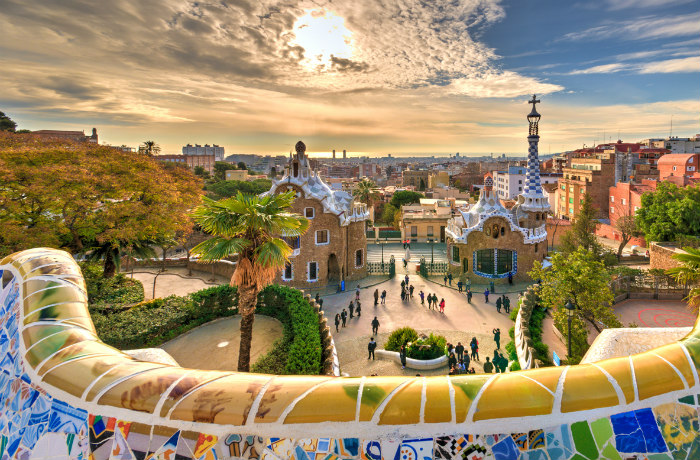With 28 countries comprising the European Union (plus additional options across the continent) Europe features an amazing array destinations and experiences for visitors. It’s impossible to see all of Europe in any one visit — or even mention everything there is to do and experience in one stop. However, it is possible to identify some of the most important, popular, influential, and memorable locations in Europe to launch you on your journey.
How to Find Cheap Flights to Europe
There are surprisingly affordable flights to Europe: that is, if you know where to look and have a flexible schedule. You will often find the best fares on Tuesdays and Wednesdays. Travel in the off-season — and avoid major holidays — to enjoy fewer crowds, cheaper hotel rates, and more affordable plane tickets. We also recommend checking out low-cost carriers like Norwegian Air for the best deals. For more offers and advice, check out our Europe page.
Where to Go in Europe

These are a few of the most popular and iconic destinations in Europe. However, don’t rule out less explored countries or lesser-known locales. Often, you’ll find less expensive hotels and restaurants and far less crowded attractions in these non-touristy spots.
France: Paris, with its iconic Eiffel Tower and treasure-filled Louvre is at the top of many travelers’ bucket lists. Other highlights include the country's Mediterranean Coast and the Provence countryside.
Italy: Italy is one of the most popular vacation destinations in Europe, and it's easy to see why. There's Rome and its Colosseum; Vatican City (which is technically its own country); the ruins of Pompeii; the sunny southern coast of Sicily; the Renaissance riches of Florence; and the water-filled city of Venice —all bucket-list-worthy spots in this boot-shaped country.
Great Britain: An easy point of entry to Europe, this English-speaking home of Shakespeare comprises England, Scotland, Ireland, and Whales. Great Britain offers a mix of culture and activities that make it a perennial favorite to visit. Start in London with a visit to Buckingham Palace, take a stroll through Hyde Park, stop at at Westminster Abbey, and snap postcard-worthy pics at Big Ben and the London Eye. Head into the countryside to get a look at Stonehenge, tour the University of Oxford, and visit the Bard’s home in Avon. Head to the Emerald Island of Ireland for an urban stroll through Dublin’s Trinity College and gawk at the ancient Book of Kells. Then, tour around the countryside to see some of the most stunning scenery anywhere in Europe, including the Ring of Kerry and the Cliffs of Moher.

Switzerland: If you’ve seen The Sound of Music, there’s a good chance you’ve been dreaming of the rolling green mountains of the Alps already. Although we don’t’ like to stereotype a country, everything you’ve heard about Switzerland is true: the chocolate is stellar, the trains run like clockwork, the clocks run like a precision drill team — and cities like Zurich, Saint Moritz, Gstaad, and Bern are as spotless as they are spectacularly beautiful.
Germany: With over 20,000 castles, charming medieval villages, beautiful winter holiday markets, a festive autumnal Oktoberfest, and beautiful summer days spent exploring scenic vineyards and hiking through the fairytale-worthy Black Forest, Germany often feels like a storybook come to life. On the other hand, the urban capital of Berlin is famed for its modern art and culture scene.
Spain: Spain, which is part of the sunny southern edge of Europe, Madrid, Barcelona, Costa del Sol, Córdoba, and Seville offer a mix of stunning architecture, rich museums, pristine and beaches (and sometimes all three, like in Barcelona).

How Much Does a Trip to Europe Cost?
With such a wide region, and so many factors to consider — including length of stay and budget preferences — it’s hard to give a single figure when it comes to cost. Start your budget planning with international airfare, which can range anywhere from $400 round trip (occasionally less) to well over $1,000. Next, plan for accommodations: do you prefer a full-service hotel, a low-budget hostel, or an apartment where you can cook meals? Keep food costs in mind, too. You’ll spend less money if you shop at local markets and eat picnic lunches than if you dine out for every meal. Next, factor in regional transportation. For most cities, you can use public transportation to get around. If you’re planning on visiting multiple regions, you can rent a car or choose some of the efficient train options. Finally, budget for sightseeing and tickets to attractions. For more deals and advice, visit our Europe page.
Things to Do in Europe
- Visit ancient castles and majestic palaces
- Tour the world’s greatest museums
- Soak up the sun on stunning beaches
- Marvel at phenomenal churches and cathedrals
- Sample local food and wine
- Learn to cook regional culinary specialties
- Explore forests and wild natural areas
- Sail along stunning coasts
- Bike through vineyards
- Hike along soaring cliffs
- Raise a glass with the locals in pubs
- People-watch in sidewalk cafés

